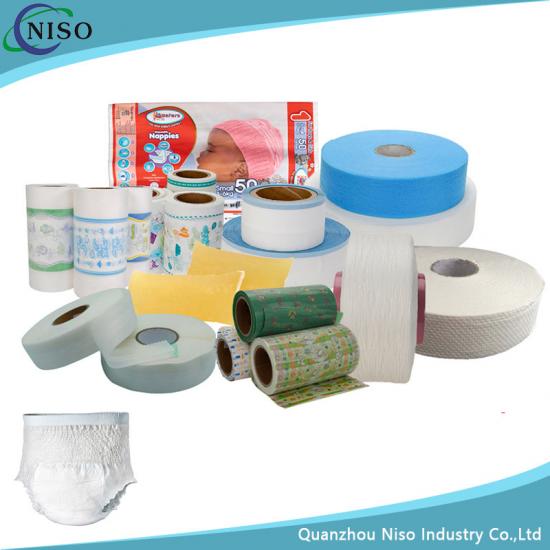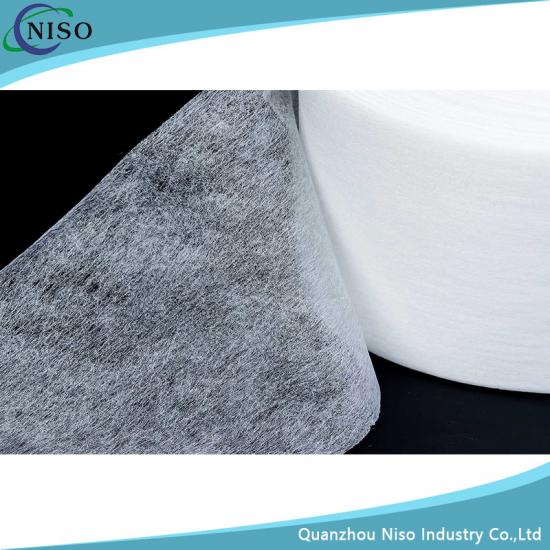
What is that stuff inside diapers? Chemists are responsible for the compound that absorbs so much liquid – it’s called a hydrogel. Copyright image by Decoded Science, all rights reserved.
Within most disposable diapers is a truly remarkable technology – a moisture-trapping substance that is known as a hydrogel.
Besides the hydrogel’s ability to trap moisture, researchers are currently investigating potential use of this substance as a transdermal drug delivery system (or patch), an adjuvant in stem cell therapy, and a dissolvable ‘band-aid.’
Hydrogels can also find use as a flame insulator/retardant and in contact lenses. With so many applications, the use of hydrogels is a billion dollar industry.
In fact, gels were utilized in NASA’s STARDUST mission–in which particles from the early history of the Solar System embedded into a gel matrix (Aerogel).
With this sort of polymer, as you can see, the sky’s the limit – but for the purposes of this article, let’s focus on the bottom line: Hydrogels are extremely useful in diapers – but what are they, and how do they work?
A Brief History of Hydrogels
Hydrogels are substances made of repeatable single unit molecules–or monomers. Originally, gels and polymers were classified as two instances of an identical substance. The term polymer implies that there are many (poly) repeatable single units of a molecule. When strung together over hundreds of thousands of units, it becomes a (macro) substance. Many items are made of polymers: clothes, plastics, and perhaps your computer case or tablet case.
Hydrogels are polymers that came into being in the 19th century when chemists realized that rubber (a polymer) shrinks when it is heated. The shrinkage (and swelling of polymers) allowed for their eventual use in consumer goods and industry.
During WWII, it was necessary for the US government to find a replacement for natural rubber since most sources were located in the Far East Pacific Theater. Thus, allied chemists investigated the nature of polymers like polyacrylic acid, and through their investigations found synthetic replacements.
Synthetic schemes gave way to a more exact science with the work of Paul Flory, Maurice Huggins, and John Rehner (to name a few distinguished scientists). The science of polyacrylic acid and polymers, in general, expanded after WWII giving rise to cheap polymer replacements for almost every item by the 1960s. And so, disposable diapers became a normal way to potty-train children in the late 1960s.
Scientists experimented on hydrogels, like polyacrylic acid, during WWII and the gels became the eventual backbone of polymer science. Patents from the War era reveal that polyacrylic acid was used to develop photographs and fire gels (retardants). Chemists, such as Paul Flory at Shell Oil Company, took the art of polymers into a science with his 1943 publications: Statistical Mechanics of Cross-Linked Polymer Networks I & II.
Gels vs Polymers
Chemists and physical scientists initially used the terms gel and polymer interchangeably. Although the two materials have a common polymeric foundation, the differences are best termed as follows:
Hydrogels are polymers that can retain water, and are ‘smart polymers’ — they possess the ability to respond to changes in their immediate vicinity (environment). Hydrogels contain carbon-hydrogen-oxygen molecules that are less water-resistant than vulcanized rubber.
Polymers in vulcanized rubber will only swell under special circumstances: Water can not penetrate this polymer – only molecules containing carbon-hydrogens can penetrate the polymer matrix. That means hydrogel polymers are more useful than rubber for many applications that involve a variety of liquids.
Useful Hydrogels

Science experiments are fun – just don’t use the contact lens on your eye after you use it for this experiment. Copyright image by Decoded Science, all rights reserved.
The ability of hydrogels to retain water means they’re very useful in diapers – but this sort of polymer is also useful for many other purposes as well, such as fire insulation and contact lenses.
- Hydrogels in Fire Insulation: Movie stunts that use fire as a catalyst to grab an audience’s attention employ ‘water-swelled hydrogels.’ How do stuntmen escape injury? They are coated with a water/hydrogel mixture. Water that is absorbed into the gel acts as an impenetrable barrier to the fire.
- Hydrogels in Contact Lenses: Disposable, soft contact lenses are termed smart polymers – they employ diaper technology. While diaper hydrogels swell in the presence of water, contact lenses need to be flexible under physiological conditions.
How Does Osmosis Work?
Osmosis occurs as a result of molecular forces that push a fluid into a dry, matrix-like region. Osmosis, or Osmotic Pressure, employs three basic terms: temperature, volume and the pressure. While the simplest osmotic pressure uses only the three basic terms, osmosis or swelling of a hydrogel reveals a complexity that is interdependent upon the slightest environmental variable.

Aerogel is a type of inorganic chemical polymer.
It was used by NASA in the STARDUST mission to trap particles of the early Solar System. The gel is one of the lightest known materials–its density approaches pure air.
Image by NASA.gov
Flory, Rehner, (and Huggins, independently) developed a physical chemical construct to explain the behavior of rubber and its synthetic replacements. Their methods employed chemical thermodynamics to theorize how natural and synthetic rubber ‘behaved.’
Vulcanized Rubber is Stronger – and Hydrogels are More Versatile
The computations these researchers used helped to explain how vulcanization of rubber proved to be superior to the natural product. When applied to gels, the approximation is presently regarded as a qualitative assessment of its physical chemistry.
Gel technology performs what many regard as miraculous — it has been under development since the War efforts in 1938-1945. Hydrogels continue to be useful in multiple areas without ceasing expansion. Presently, science use them in Stem Cell technology — but is there a limit?
Because gels can retain and expel water with little evidence of liquid contaminants, there may be cause to investigate their (potential) repercussions upon the environment.
Hydrogels seem to be a panacea for what does not ail us, but there is no denying their value.
However, their enormous versatility leaves this writer a bit wary and should leave us all scratching our heads.
© Copyright 2015 John A. Jaksich, All rights Reserved. Written For: Decoded Science










 IPv6 network supported
IPv6 network supported